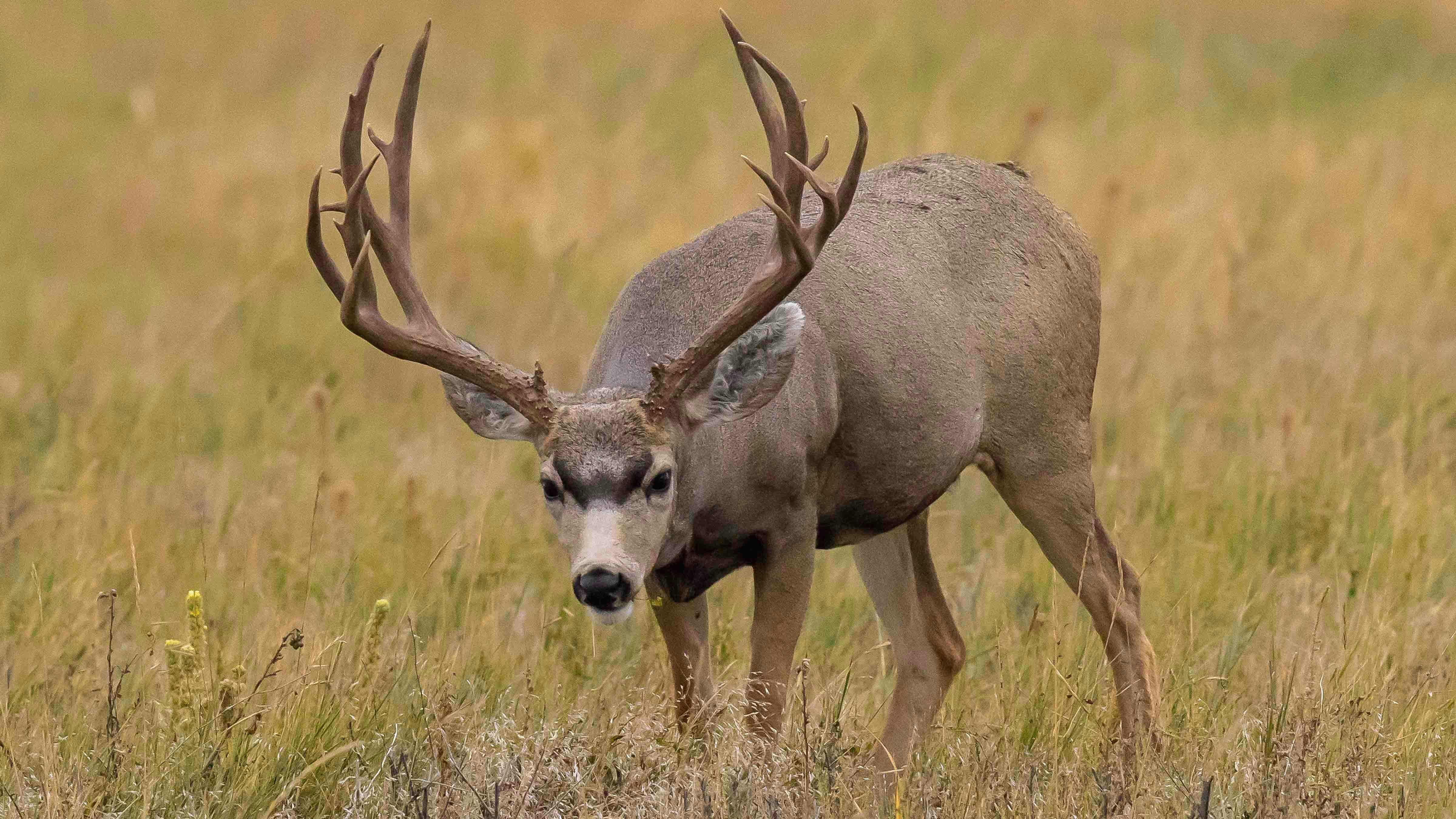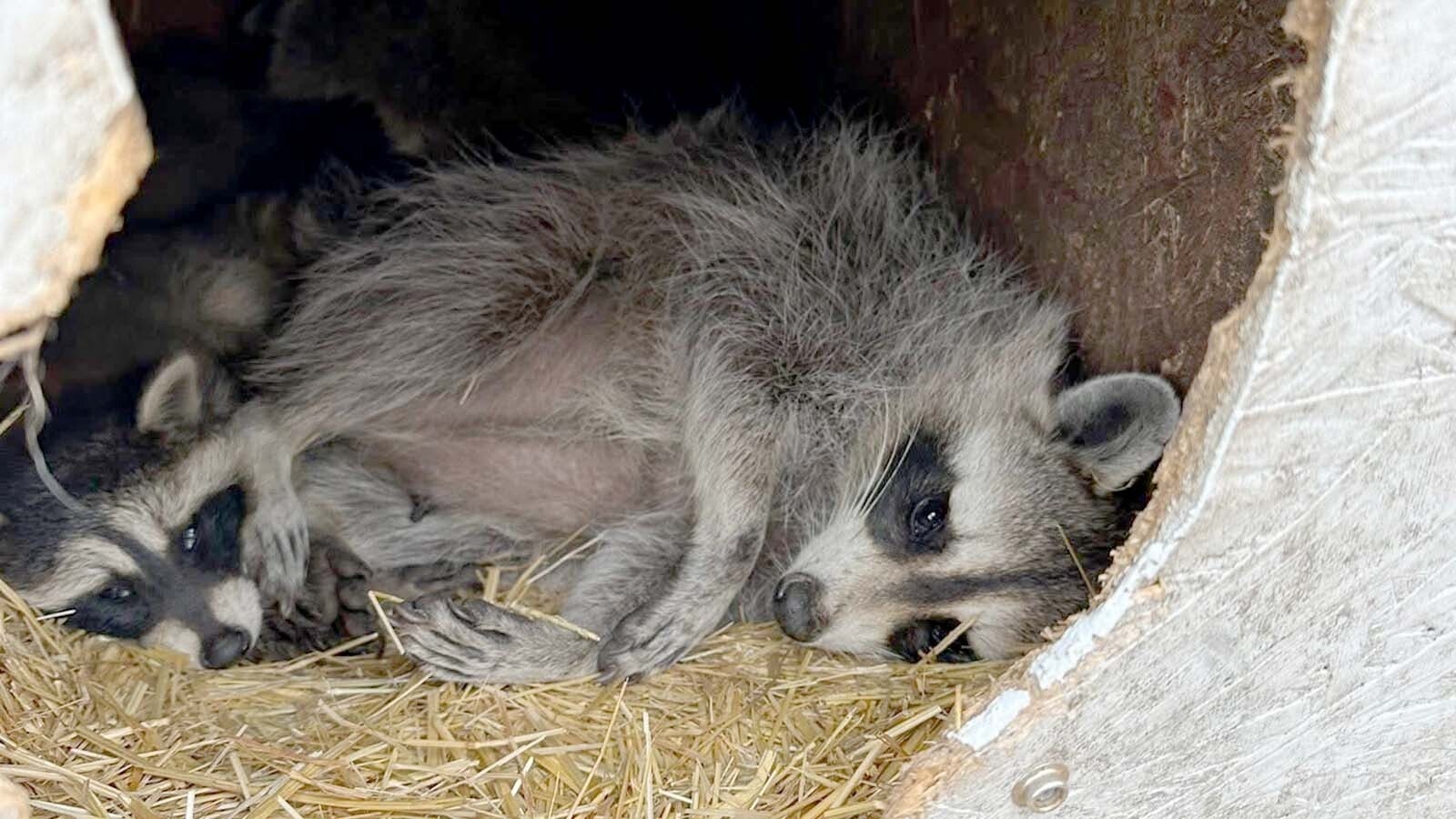As fall hunting and wildlife watching seasons approach in Wyoming, the outlook could be bittersweet.
There are fewer critters on the landscape, but that also means less competition for food among those that survived the winter. And a wet spring and summer has produced nutrient-rich forage that could make big game racks grow bigger.
“With this kind of grass, you’re going to see some really good horn and antler growth,” said outdoorsman Mike Eastman of Park County.
Eastman grew up in the Jackson area and has watched, filmed and photographed Wyoming wildlife for decades. He founded the Powell-based Eastman’s Publishing Inc., which specializes in covering fair-chase Western big game trophy hunting.
Along with some other outdoor enthusiasts, he told Cowboy State Daily that this could be a banner year for big bucks and bulls in Wyoming.
‘Less Competition For Food’
Better nutrition often translates into better antler growth, said Wyoming Department of Game and Fish spokeswoman Breanna Ball.
This year, it boiled down to some cruel odds. Simply put, the lucky animals that pulled through winter in the hardest-hit areas were left with less competition for grass, shrubs and other forage.
“Winter impacts varied across the state, with other regions hit harder,” she said. “So, there is a silver lining in hard-hit areas that experienced exceptional moisture into the summer. The silver lining being a great abundance of forage and less competition for food.”
Good Wyoming Genetics
Winter took its greatest toll on mule deer and antelope herds in central and southwest Wyoming. Thousands of animals froze or starved to death, and many antelope were also killed by a rare form of pneumonia.
In response, the Wyoming Game and Fish Commission trimmed thousands of antelope and deer tags for this fall’s seasons.
Even so, all that great critter food sprouting up form the ground could give tenacious hunters and wildlife watchers bigger bucks to admire or hang on their walls, Ball said.
“The additional moisture received has allowed for a longer growing season where key forage species remained green, nutritious and productive longer than normal,” she said. “This creates an increase in both the quantity and quality of forage which often translates into increased antler growth for males.
“In order to capitalize on this, males need to be in the right age class where they have shifted from additional cell development associated with growing their bodies (think yearlings here) to growing antlers. Nutrition, age and genetics all play a role in antler development,” she added.
Some Wyoming mule deer herds, particularly those in southwest Wyoming, are known for their great genetics, Eastman said.
That area has always produced some monster bucks, he said. One that’s recently gained popularity, a buck that’s been dubbed “The King” by his social media fan base, is yet another example of that.
“Those bucks have always been there,” Eastman added. But in the days before widespread film and photography, and later instant online publicity, not as many people knew about them.
‘The Best I’ve Ever Seen Them’
Avid hunter and hunting guide Blake Fegler of Shoshoni took some of the latest video footage of The King on winter range in western Sublette County.
The King is a master of evading hunters – nobody seems to know where he goes during hunting season – Fegler said. So the odds of anybody bagging him are slim.
But, going by what Fegler’s seen in the field this spring and summer, elk hunters are in for a treat, he said.
“They are in the best shape I’ve ever seen them,” he said, both in terms of body growth and impressive antler racks on the bulls.
In the Teton and Yellowstone Park area, bull moose are also looking fat and happy, said wildlife photographer Jorn Vangoidtsenhoven.
He added that it’s tough to say just by eyeballing the bulls if their antlers are any bigger this year, but they are amazingly photogenic nonetheless.
“One of the biggest bulls named ‘Hoback’ looks impressive this year with two drop tines (antler points growing downward),” he said.
Not All Bad News For Antelope
Many hunters in hard-hit areas are skipping out on antelope hunting this year. Winter conditions were much better to the east, and fewer animals died.
Johnny Bergeson of Laramie, an avid hunter, guide and taxidermist, said he plans to hunt antelope near Saratoga. But he won’t shoot anything unless he finds an absolute monster of a buck.
His odds of that might be good.
“There’s definitely fewer antelope. But the ones that survived have some good horn growth, from what I’m seeing,” he said.
In the areas where the winter was especially brutal, antelope horn growth might be a little wonky, Eastman said.
“Antelope horn growth is different from anything else. They grow the tops of their horns during the winter,” he said.
So, the tops of bucks’ horns came in when nutrition was hard to come by, he said. While the bases and cutters (the prongs that protrude from the fronts of the horns) grew during the abundant spring and summer months.
“They’ll have good bases and cutters, and their tops will be really thin,” Eastman said.
Mark Heinz can be reached at mark@cowboystatedaily.com.





